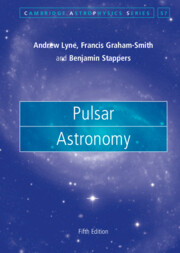Book contents
- Frontmatter
- Contents
- Preface
- Part I Discoveries and Techniques
- Part II Observed Physical Characteristics
- Part III Neutron Star Physics
- Part IV Environments and the Interstellar Medium
- 18 Supernovae and Their Remnants: Pulsar Wind Nebulae
- 19 Interstellar Scintillation and Scattering
- 20 The Interstellar Magnetic Field
- 21 Prospects
- References
- Index
19 - Interstellar Scintillation and Scattering
from Part IV - Environments and the Interstellar Medium
Published online by Cambridge University Press: 21 July 2022
- Frontmatter
- Contents
- Preface
- Part I Discoveries and Techniques
- Part II Observed Physical Characteristics
- Part III Neutron Star Physics
- Part IV Environments and the Interstellar Medium
- 18 Supernovae and Their Remnants: Pulsar Wind Nebulae
- 19 Interstellar Scintillation and Scattering
- 20 The Interstellar Magnetic Field
- 21 Prospects
- References
- Index
Summary
The ionised interstellar medium is ideally accessible to radio pulsar research, both on large scales through frequency dispersion and on small scales through scattering and random refraction of radio waves. The theory is presented both geometrically and as wave diffraction. Observations reveal structure on a wide range of scales, including the effects of discrete structures. Interstellar scattering also lengthens radio pulses.
Keywords
- Type
- Chapter
- Information
- Pulsar Astronomy , pp. 322 - 348Publisher: Cambridge University PressPrint publication year: 2022

